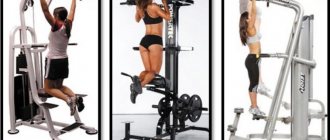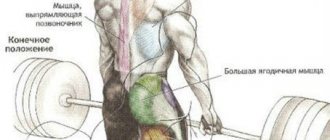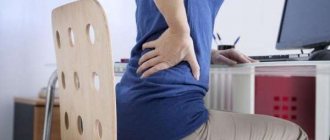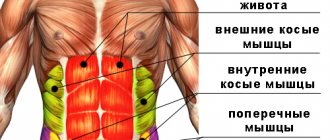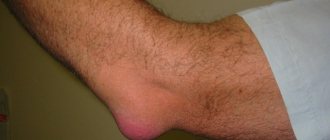Injury to nerve structures in the chest area is uncommon. It usually occurs after injuries to the vertebrae, with curvature or osteochondrosis of this part of the spine. When a nerve is pinched in the thoracic spine, the symptoms are similar to intercostal neuralgia, but more pronounced. The situation requires urgent assistance.
Pinched nerve fibers
Treatment
Treatment depends entirely on the root cause that served as the impetus for the compression of the nerve ending and on which nerve was damaged. But there are still a few actions that are common.
The main thing is to try to free the nerve itself and restore its functionality. Manual therapy is well suited for this; even light acupressure can reduce muscle activity, which will alleviate the condition. Often even a one-time massage can eliminate soreness.
Massage can relieve pain
However, for recovery it is extremely difficult to eliminate the pain. Because it tends to come back and aggravate the condition. It is necessary to find the source of the problem and identify the causes of pinching.
Osteochondrosis, as the main provocateur of neuralgia and pinching, needs constant monitoring. Therefore, you need to visit a neurologist to conduct a comprehensive study.
Typically, drug treatment includes drugs that strengthen blood vessels, improve blood circulation, and antispasmodics. The latter can act to relax muscle tone, which will relieve pain. In case of severe lesions of the spine, a fixing corset is prescribed.
After the pain symptoms are relieved, light exercises and manual therapy are prescribed. This helps restore lost functions of the spine, return it to its natural state and prevent muscle spasms. It should be taken into account that when a hernia is identified, it is advisable to consult with a treating specialist about its removal. In some cases, the presence of a hernia in the thoracic region regularly provokes pain and pinching.
It is important to understand that a pinched nerve in the chest can only be treated by identifying the original source. Relieving pain only helps temporarily, delaying the period
We must not forget that the pain brought by pinching is a signal for help, a pain symptom of the body. Delayed treatment may result in partial paralysis or disability. Osteochondrosis does not stand still, wear and tear of bone tissue is irreversible and it is simply impossible to avoid it
Pain relief only helps temporarily, delaying the period. We must not forget that the pain brought by pinching is a signal for help, a pain symptom of the body. Delayed treatment may result in partial paralysis or disability. Osteochondrosis does not stand still, the wear and tear of bone tissue is irreversible and it is simply impossible to avoid it.
A sore back needs therapy and rest, gentle conditions. Experts recommend treatment twice a year, but sometimes once a year is enough to maintain the spine so that you no longer experience pain.
Therapeutic exercises
One of the options for quickly getting rid of a pinched nerve in the thoracic region is a list of treated gymnastic exercises. Gymnastics can be performed both in case of exacerbation of the disease and in the chronic form.
The main rule that must be observed during gymnastics is to prevent the manifestation of pain. Every time you experience pain while performing any exercise, you need to stop and take a comfortable position:
- Sit on a chair and straighten your back. Place your hands on the back of your head and bend. Pressing your spine against the top of the back of the chair, bend back and lean forward. It is necessary to repeat such movements four times. Breathing should also be controlled; while bending back, you need to inhale, and when bending forward, exhale.
- Get on all fours and fix your spine in this position. At the same time, you must keep your head straight so that the spinal column is aligned. Start arching and arching your back. Make sure that the cervical spine is a harmonious continuation of the position of the rest of the spine. It is recommended to do 5-8 repetitions at a time. After each deflection or arching, you need to return to the starting position.
- Lie on your stomach and place your arms near your body, resting on your palms. From this position, raise your upper body. The feet remain on the floor. The number of repetitions recommended for performance is 5-8. When reaching the end point during the exercise, you should not tilt your head back too much. The thoracic region should stretch directly due to arching.
- From a supine position, you need to raise your head, neck and upper torso and lift your legs off the floor. Number of repetitions 8-10 times.
Causes
Previously, experts were of the opinion that the thoracic nerves were infringed in elderly people - mainly due to degenerative processes in the spine, osteochondrosis. However, the practice of recent years suggests that the disease has become significantly “younger”.
Problems in the musculoskeletal system occur in both able-bodied individuals and adolescents. This is due to both the unfavorable environmental situation and mainly physical inactivity - spending several hours in a sitting position, for example, at a computer. Doctors see poor posture as the main root cause of the fact that the nerve fiber is pinched between the vertebrae and becomes inflamed.
The autonomic nervous system is often involved in the pathological process - a change in the position of the vertebrae provokes a failure in the innervation of internal organs. The main manifestations, in addition to pain, will be shortness of breath, tachycardia, increased sweating and fatigue, and irritability.
In a number of situations, the provoking factors for pinched nerves are:
- spinal hernia;
- neuroinfections;
- tumor neoplasms.
- direct trauma to the thoracic spine;
- local or general hypothermia;
- exacerbation of chronic pathology of internal organs;
- psycho-emotional shocks suffered by a person.
Only by identifying and eliminating the root cause of the pathological condition will it be possible to achieve complete recovery.
Treatment of a pinched nerve in the thoracic spine
Spinal pathologies must be treated exclusively under the supervision of a specialist.
Therapy depends on the underlying cause of the pathology. Pinching must be treated comprehensively. The following measures are usually prescribed: medication, physiotherapy, therapeutic exercises, herbal medicine. If serious structural disorders of the spine are observed or conservative medicine does not produce the desired effect, surgery is considered.
An important aspect is the need for first aid in case of pinching, which includes the following measures:
- Place the patient on a straight, hard surface lying down. Help you take the most comfortable position that reduces chest pain.
- If necessary, give painkillers or apply analgesic ointment to the affected area of the back. “Ketanov” is perfect.
- If the patient is overexcited and very nervous, it is necessary to give a sedative: “Novopassit” or “Persen”.
- If breathing is difficult, ensure access to oxygen: remove clothing from the chest, open the windows.
What medications are prescribed?
When pinched, the following groups of drugs are used. presented in the table:
| Group | Effect | Example |
| Antispasmodics | Relieves muscle hypertonicity and relieves pain | "Tinazidine" |
| "Tolperizon" | ||
| Nonsteroidal anti-inflammatory drugs | Stop inflammation | "Diclofenac" |
| "Celecoxib" | ||
| Chondroprotectors | Stimulates the production of cartilage tissue and restores joints, relevant if the cause of pinching is osteochondrosis | "Chondroitin" |
| "Teraflex" |
Vitamins are an integral part of rehabilitation.
In addition, B vitamins are prescribed in combination. They have a positive effect on metabolic processes in tissues, strengthen the body and restore the structure of nerve fibers. If the pain is not relieved by conventional painkillers, strong prescription medications such as Tramadol are prescribed. But this is a temporary measure, since the drug has serious side effects and is addictive.
Physiotherapeutic procedures
A pinched nerve in the spine responds well to physical therapy methods, which include:
- osteopathy;
- acupuncture;
- electrophoresis;
- magnetic therapy;
- ultraviolet irradiation;
- reflexology.
When is surgery needed?
Spinal hernia is treated surgically.
Surgery is used in complex cases of pinched nerves when traditional treatment does not help. The specifics and scale of the operation are determined by the root cause of the pinching. Indications for intervention are: intervertebral hernias, severe osteochondrosis, serious spinal injuries, oncological tumors and benign neoplasms.
Exercises and massage
Exercise therapy is aimed at strengthening the muscular corset of the spine, which will prevent recurrence of the pathological condition. The effect of physical education will be if you regularly perform exercises at home with a gradual increase in load. The doctor will show you the execution mechanism. In addition to physical education, it is recommended to attend massage sessions. This event improves blood flow to the pinched area, relaxes the muscles and effectively relieves pain.
Traditional treatment
Rubbing will improve blood circulation.
If a nerve is pinched in the sternum, the following home recipes help:
- Dilute garlic oil with half a liter of vodka and rub it on the spine.
- Squeeze juice from celery. Take two tablespoons three times a day.
- Apply horseradish leaves to the affected area, fix and leave overnight.
Osteochondrosis
This is the destruction of tissue in the joints; with age, cartilage and bone tissue wear out. As a result, their position may change, often touching the nerve endings. In such a situation, pinched nerves of the thoracic region often occur.
How is this treated? First of all, you need to stop osteochondrosis. The treatment procedure requires the removal of nerve tissue trapped in the affected area.
Effective prevention of pinched nerves
Preventive measures are aimed at eliminating possible causes of pinching; for this they use:
regular warm-up during sedentary work; orthopedic pillows and mattress; yoga classes and swimming pool; Do not lift heavy objects; When sitting for a long time, warming up is vital.
The head is tilted back and forth and to the sides without sudden movements or haste. Then they gently press it to different shoulders with a slight delay. Stretching also helps to quickly relax tense muscles.
These materials will be of interest to you:
How to treat a pinched nerve in the hip joint? Pain in the hip joint can appear due to various events:... What to do if a nerve is pinched in the lower back? Often people face such a problem as a pinched nerve in... Treatment of the trigeminal nerve: physiotherapy and folk remedies The trigeminal nerve is one of all vital pairs of nerves. Symptoms...
A pinched nerve occurs when the nerve roots extending from the spinal cord are compressed by neighboring vertebrae, intervertebral discs, muscles and various pathological formations.
Pinched nerves by the cervical vertebrae are called cervical radiculopathy, and pinched occipital nerves are called occipital neuralgia.
Problems with pinched nerves in the cervical spine are widespread, and the intensity of pain with such pinching is much stronger than with pinched nerves in other parts.
Features of the structure of the cervical spine Possible causes of pinching Signs and symptoms Possible consequences Basic diagnostic methods How to treat a pinched nerve in the cervical spine? Prevention measures
Pinching symptoms
When the cause of the pathology is a problem with the spine, the symptoms of pinching depend on which nerves are affected. Depending on their location and functionality, they are vegetative, motor and sensitive.
The most common signs of pinching:
- pain in the chest on the right or left;
- numbness, goosebumps, burning, tingling, deterioration of sensitivity at the site of the lesion;
- stiffness of the upper limbs;
- headache with dizziness;
- pressure rise;
- increased heart rate;
- pain near the heart, in the area of the shoulder blades, solar plexus;
- cough and shortness of breath.
The main clinical sign of the pathological condition is pain. It can be sharp, aching, and radiate to the arm and shoulder on the affected side. Often the pain is localized in the interscapular space, spreads along the ribs, in the ridge. The sensations can last from a minute to several days and end as unexpectedly as they appeared. Increased pain occurs with movement, sudden change of position, deep breath, sneezing and coughing.
The symptoms that occur when a nerve is pinched may closely resemble a clinical problem with the respiratory or cardiovascular system. Without timely assistance, mobility may be limited so much that it will lead to complete loss of ability to work for a certain period of time.
Diagnosis and treatment methods
Degenerative changes in the spine on a CT scan
When making a diagnosis, the neurologist checks the patient's reflexes and sensitivity in problem areas. To determine the degree and cause of nerve root entrapment, the following instrumental examination methods are used:
- chest x-ray;
- Magnetic resonance imaging;
- CT scan.
Symptoms of pinched nerves are similar to pathologies of the cardiovascular system and gastrointestinal tract. To exclude such diseases, an electrocardiogram, ultrasound of the intestines, gallbladder and liver are prescribed.
Drug therapy
Finalgon ointment has analgesic properties
Treatment of pinched nerves in the thoracic spine is aimed at eliminating the causes of compression. The inflammatory process that causes acute pain is stopped with the help of non-steroidal anti-inflammatory drugs:
- Ortofen;
- Nise;
- Ibuprofen;
- Nimesil;
- Diclofenac.
Taking medications is complemented by local agents with anti-inflammatory and warming effects. Popular ointments and gels:
- Diclak (diclofenac) – has an analgesic and anti-inflammatory effect, used 3-4 times a day.
- Deep Relief is a complex drug containing menthol and ibuprofen. The gel quickly relieves pain in adults.
- Finalgon - the active substance dilates blood vessels and accelerates blood circulation.
In case of severe pain, an injection of local anesthetic – Novocaine or Lidocaine – will be required. A relaxing effect during muscle spasms is obtained by taking muscle relaxants: Sirdalurd, Mydocalm, Baclofen. In the treatment of neuralgia, the use of vitamin B preparations is indicated. They normalize the functioning of the nervous system and the blood circulation process.
Manual therapy and massage
You can restore spinal mobility with manual therapy
The massage procedure has a relaxing effect, but at the same time stimulates the activity of natural regeneration and metabolic processes. After the session, thanks to accelerated blood circulation, the tissues are saturated with oxygen and nutrients. To relieve pinching and its consequences, the technique of stroking, pinching, kneading and patting is used. To enhance the positive effect, the massage therapist uses medicinal ointments and essential oils. Vacuum cupping massage is effective; the procedure can be performed at home.
Traditional methods
Traditional medicine recipes will be a good addition to treatment. Baths with a decoction of medicinal herbs will help reduce pain. A collection of hops, horsetail, pine cones, oregano and burdock in a volume of 8 tbsp. spoon, pour 2 liters of water and cook for 10 minutes. The strained composition is added to the bathing water. Alcohol tincture of calendula, St. John's wort, and geranium is used as a rub. Applications with melted beeswax are useful.
Physiotherapy
Physiotherapy for osteochondrosis helps restore blood circulation and relieve pain
Physiotherapeutic procedures help relieve swelling, improve blood supply to tissues, and help normalize muscle tone. Are used:
- magnetic therapy;
- electrophoresis with the application of drugs;
- UHF;
- wax applications.
The effects of heat, electric current, ultrasound, and magnetic fields have a beneficial effect on the general condition of the patient.
Acupuncture helps to engage natural mechanisms that promote healing. Placing needles in biologically active points relieves pain, swelling, and inflammation. A course of reflexology partially replaces the use of medications. The procedure is safe and has a minimum of contraindications.
Physiotherapy
A set of therapeutic exercises helps restore motor activity. They are selected by the doctor individually, depending on the age and physical condition of the patient. Exercises are performed sitting on a chair and lying on the floor. They are aimed at stretching the spine and increasing muscle tone. Classes begin with a light load, repetitions 5-6 times. The set of exercises includes bending, turning the body, and bending.
Pinched cervical nerve in a child
In newborns, the cervical region is one of the most vulnerable places. In infants, the neck muscles are not yet able to fully perform motor and fixation functions, therefore the upper part of the spinal column in the child is very weak. Sometimes pinching occurs in the womb when the fetus is not positioned correctly.
Symptoms of neuralgia in newborns:
the baby begins to cry with any change in body position and does not calm down in his arms; torticollis; the muscles in the occipital region and neck are very tense; seals can be felt in the soft tissues of the neck.
In older children, pinching occurs due to injuries, incorrect posture, or an incorrectly selected school backpack.
What to do if a child’s nerve is pinched? Visit a doctor as soon as possible. In the absence of proper treatment, serious complications develop against the background of neuralgia.
Consequences of the disease
When treatment is not carried out fully or late, complications may occur:
- Constant back pain.
- Deterioration in performance.
- Muscle tissue weakens or atrophies.
- Problems with fine motor skills of the hands.
- Sensitivity and motor function deteriorate, and paralysis may develop.
When the patient does therapeutic exercises, there is no pressure on the spine, all the advice of neurologists is followed, and the signs of the disorder are eliminated for a long time.
What to do: emergency measures
If the attack occurs unexpectedly, it is advisable to immediately lie down on a flat surface and limit movements as much as possible. In the next three days, it is better to lie down or at least follow a gentle regime and not overexert yourself. Anti-inflammatory or analgesic ointments will help alleviate the condition - for example, Dolobene, Fastum-gel or Nurofen. For severe pain, you can take a tablet of Baralgin or Ibuprofen.
Dolobene gel has a triple effect - relieves pain, inflammation and swelling.
It is important to know that thermal procedures - warming up or using warming ointments - can cause increased swelling of the soft tissues and, accordingly, compression of the nerve. Therefore, it is not advisable to use them
For herpes zoster, which is accompanied by burning, excruciating pain, applying cold compresses usually helps. However, prolonged cooling of the chest can lead to inflammation of the respiratory system or increased symptoms of neuralgia.
In the acute phase of the disease, massage and manual therapy sessions should not be performed. Such procedures are indicated only during the rehabilitation period, after relief of acute symptoms.
You can speed up recovery with good nutrition. B vitamins are especially useful for a damaged nerve. During treatment, it is recommended to exclude foods and drinks that contribute to fluid retention in the body: alcohol, pickles, marinades and canned food.
Complications
If treatment is not provided in a timely manner, a person may experience various complications. Pinching in the spine can lead to the following complications: impaired motor function of the limbs, chronic back pain, bulging discs and paralysis.
If you carry out high-quality treatment and follow all the doctor’s recommendations (for example, do physical therapy exercises), then pinching in the spine will not lead to negative consequences.
What exercises are there?
Exercise therapy is a set of exercises that includes appropriate physical activity, which is aimed at the rehabilitation of patients from various fields of medicine. In this section we will get acquainted with therapeutic exercises and physical education recommended to combat pinched sciatic nerve. Such exercises make the human body more resilient and help cope with the disease.
Gymnastics
For diseases that are in a subacute form or in remission, a set of gentle gymnastic exercises can be prescribed. For the convenience of the patient, they are divided into 3 groups.
- To perform these exercises, the patient needs to lie down, having previously laid a blanket or rug. The fact is that a draft and coolness can have a negative impact on the patient’s well-being. So, having taken a supine position, a person suffering from pinching should try to straighten up as much as possible. After this, he will have to raise his leg and bend the knee joint. Next, try to bend the limb as close to the chest as possible, freezing in this position for 7-10 seconds, and return to the starting position; — Lying on his back, the patient should place his hands under his buttocks. After this, slowly raise your legs as much as possible. Next, make a “bicycle”; - Everyone in the same position, arms spread to the sides, creating the letter “T”, or placed at the seams. Then they raise their legs, starting with slight tilts of the leg to the right and left. The tilt angle should be up to 45 degrees. If pain is a concern, the amplitude should be reduced.
- The following exercises are performed in a sitting position. - Sitting on the floor, the patient should straighten his legs. After this, you need to move your buttocks, move forward, and then go back in the same way; - In the same position, the person’s legs should remain straight and arms extended forward. Next, the patient brings his wrists to his shoulders, and then returns to the initial position; — Sitting on a chair, you need to watch your back, it should be straight, then you need to relax. In the area of the boot, cross your legs, place your hands on the back of your head and make slow movements to the left and right. Gradually you need to try to increase the amplitude.
- Position - standing. - The patient stands with his legs at shoulder level and protrudes his lower back when exhaling. The same thing happens in the opposite direction when inhaling; - While in the same position as in the previous exercise, you need to place your left hand above your head, tilting to the right. Next, change your hand and bend to the left; — The exercise involves using gentle circular movements to rub the lower back. Performed in a standing position.
Charger
Exercises for sciatica are performed regularly in the morning and evening hours. The set of exercises used is agreed upon with the attending physician or compiled on an individual basis.
Only strict adherence to the recommendations can have a positive impact on the course of the disease and produce the desired therapeutic effect.
In order to stretch the lower back muscles, you can use yoga. The following asanas will help:
- Tadasana;
- Tadasana Urdhva Hastasana.
With these exercises, the abdominal muscles are strengthened, posture is leveled, normal growth of the vertebral bones is ensured and the spinal nerves are released.
Utasana - aimed at stretching the lumbar region.
Baddha Konasana is a good prevention of radiculitis and hernia.
There are also many other exercises that can relieve sciatica.
A patient practicing yoga should not experience pain or discomfort.
Qigong gymnastics
Chinese qigong gymnastics should begin with warm-up exercises, smooth rotational movements of the joints, gentle tapping on the chest, shoulders, legs and abdomen.
Qigong does not involve actions for individual muscle groups. Chinese gymnastics affects the whole body and is distinguished by the fact that it does not carry a strong physical load.
Exercises in water
Hydrokinesitherapy is gymnastic exercises that are performed in water. They are prescribed to those patients for whom physical activity is difficult.
By doing exercise therapy in the pool, the effectiveness of exercise increases significantly, heat exchange increases, blood circulation and respiratory function are stimulated, and metabolism is accelerated.
How to prevent a pinched nerve?
When the pain has passed and the disease has receded, you cannot relax. If pinching occurs, it may happen again. To avoid relapse, you must adhere to the following recommendations:
- Try not to overeat. It is better to eat more often, but in smaller portions. Otherwise, the load on the vertebrae will increase.
- It is advisable, if the slightest opportunity arises, to try to relax in sanatoriums and resorts located by the sea.
- Of course, you won’t be able to completely give up carrying heavy bags. But the weight should be lifted correctly, periodically changing the shoulder.
- When work involves a predominantly sedentary lifestyle, breaks are a must. You can do gymnastics or just walk back and forth.
- The chest must be kept warm. Clothes should be chosen only according to the weather.
It is recommended to do light gymnastic exercises in the morning or evening.
Exercises prescribed for pinched nerve roots
Before you begin performing special gymnastics, you should visit a doctor. The doctor will help you choose the most effective exercise regimen for a particular patient, taking into account the diagnosis, characteristics of the course of the disease, physical fitness and health of the patient.
The specialist will also give recommendations on the duration and intensity of training, and explain the technique of performing exercises. Exercise therapy can be carried out both in a treatment room under the supervision of an experienced professional, and independently at home.
Approximate physical education scheme:
| Starting position: | Technique: | Frequency of execution: |
| Lying on your back | Take 20 short breaths, hold your breath for 12 seconds, then exhale. | Repeat 5-7 times |
| Lying on your stomach | Raise your chest and head as high as possible, then smoothly return to the starting position. | Do 2-3 sets of 15-20 reps. |
| Lying on your back, legs bent at the knees | Raise your body and alternately tilt it to the left and right. | Perform 2-3 approaches of 15-20 times. |
| Standing with a straight back | Slowly tilt your head forward and back, pressing your chin to your chest, then rest for 20-40 seconds. | Complete 5 repetitions. |
| Standing with straight posture | Slowly and smoothly tilt your head to the left and right, take a break for 20-40 seconds. | Repeat 5 times. |
| Standing, hands on the back of the head | Press your head onto your hands, while straining your neck muscles. | Do 5-7 times. |
| Standing or sitting | Raise your shoulders up, holding them in this position for 5-7 seconds, then lower your shoulders and relax. | Do it 5 times. |
| Standing or sitting, hands fixed on forehead | Try to lower your head down and overcome the resistance of your hands. | Repeat several times. |
| Standing or sitting, hands to temples | Tilt your head to the sides, trying to overcome the pressure of your hands. | Do several repetitions. |
| Standing or sitting | Straighten your back, relax your muscles, gently lower your head and touch your chin to the center of your chest. Stay in this position for 5 seconds, then slowly tilt your head back. | Perform 5 times, rest, do one more approach. |
